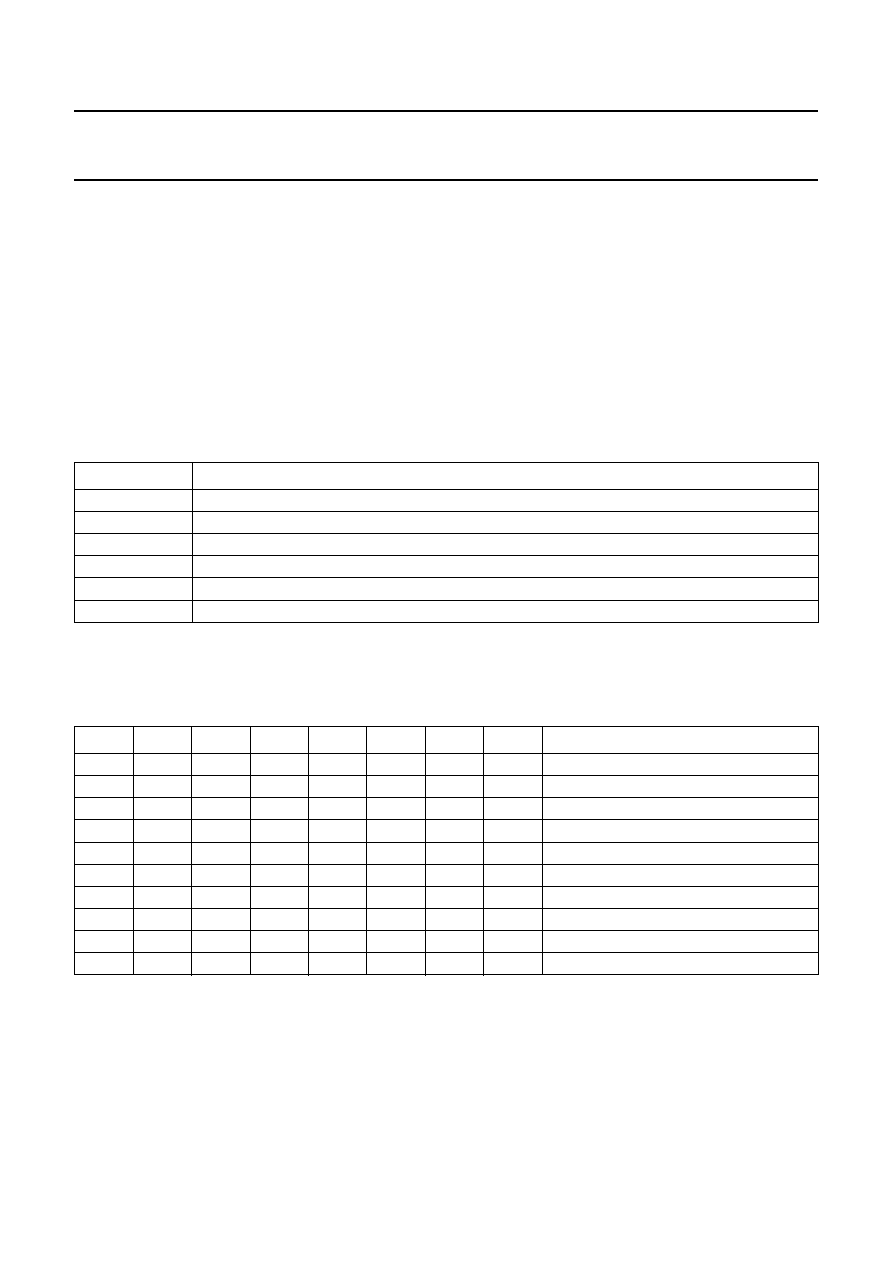- 您現(xiàn)在的位置:買賣IC網(wǎng) > PDF目錄192308 > SAA2003 (NXP Semiconductors N.V.) Stereo filter and codec PDF資料下載
參數(shù)資料
| 型號: | SAA2003 |
| 廠商: | NXP Semiconductors N.V. |
| 元件分類: | Codec |
| 英文描述: | Stereo filter and codec |
| 中文描述: | 過濾器和立體聲編解碼器 |
| 文件頁數(shù): | 9/44頁 |
| 文件大?。?/td> | 176K |
| 代理商: | SAA2003 |
第1頁第2頁第3頁第4頁第5頁第6頁第7頁第8頁當前第9頁第10頁第11頁第12頁第13頁第14頁第15頁第16頁第17頁第18頁第19頁第20頁第21頁第22頁第23頁第24頁第25頁第26頁第27頁第28頁第29頁第30頁第31頁第32頁第33頁第34頁第35頁第36頁第37頁第38頁第39頁第40頁第41頁第42頁第43頁第44頁

May 1994
17
Philips Semiconductors
Preliminary specication
Stereo lter and codec
SAA2003
Audio fade processor
The fade processor is controlled by the system microcontroller. It achieves level control, or fading, by multiplying the
audio samples with a 17 bit accuracy fade coefficient, which is selected by an 8-bit fade counter. The fade coefficients
range from 0 to 1.0 according to a 1
4 cosine function. The attenuation for a particular fade count (FC) is given as follows:
where: 0
≤ FC ≤ 255.
In encode mode, audio samples are taken from input SD1 and scaled before sub-band filter processing, and sent to
output SD2.
In decode mode, audio samples are scaled following reconstruction by the sub-band filter, and sent to outputs SD1
and SD2.
Table 10 Fade processor operating modes.
FADE PROCESSOR MODE CONTROL
The operating mode of the fade processor is controlled by two extended registers
Table 11 Fade processor mode control.
FADE RATE OPTION
The fade rate can be set to either fast or slow modes. In fast mode the attenuation changes rate at one step per audio
sample. In slow mode the rate of change of level is controlled by the fade rate bits P3 to P0. In slow mode, the fade
counter is stepped up or down according to a clock derived from the WS pin.
MODE
FUNCTION
Fade rate
controls rate of automatic increments and decrements
Step down
increases attenuation by one increment
Step up
reduces attenuation by one increment
Full scale
sets gain to unity, incrementing from current level automatically
Mute
sets gain to zero, decrementing from current level automatically
12 dB
sets gain to
12 dB, decrementing or incrementing from current level automatically
A3
A2
A1
A0
D3
D2
D1
D0
MODE
0011
P3
P2
P1
P0
set fade rate
01000001
step down
01000010
step up
010001
X
0
full scale slow
010001
X
1
full scale fast
010010
X
0
mute slow
010010
X
1
mute fast
010011
X
0
12 dB slow
010011
X
1
12 dB fast
01000000
no action
Attenuation (dB)
20 log cos
–
π FC
×
510
------------------
dB
()
=
相關PDF資料 |
PDF描述 |
|---|---|
| SAFLCS-314-0T | DIP14, IC SOCKET |
| SAFLCS-640-0T | DIP40, IC SOCKET |
| SAFLCS-318-0T | DIP18, IC SOCKET |
| SAFLCS-320-0T | DIP20, IC SOCKET |
| SAFLCS-328-0T | DIP28, IC SOCKET |
相關代理商/技術參數(shù) |
參數(shù)描述 |
|---|---|
| SAA2003H | 制造商:PHILIPS 制造商全稱:NXP Semiconductors 功能描述:Stereo filter and codec |
| SAA2013 | 制造商:PHILIPS 制造商全稱:NXP Semiconductors 功能描述:Adaptive allocation and scaling for PASC coding in DCC systems |
| SAA2013H | 制造商:PHILIPS 制造商全稱:NXP Semiconductors 功能描述:Adaptive allocation and scaling for PASC coding in DCC systems |
| SAA2013HB-S | 制造商:未知廠家 制造商全稱:未知廠家 功能描述:Digital Audio Tape Circuit |
| SAA2022 | 制造商:PHILIPS 制造商全稱:NXP Semiconductors 功能描述:Tape formatting and error correction for the DCC system |
發(fā)布緊急采購,3分鐘左右您將得到回復。